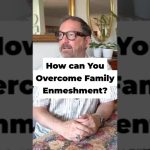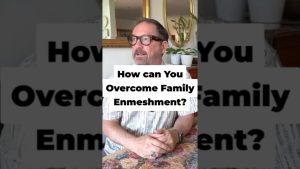A gentle exploration of breaking free from relationship patterns that no longer serve you
Have you ever found yourself drawn to the same kind of relationship over and over, despite promising yourself “never again” after each painful ending? Perhaps you’ve noticed a pattern—being attracted to partners who seem different on the surface but somehow create the same feelings of emptiness, anxiety, or never quite being enough.
You’re not alone in this quiet struggle. That pull toward familiar dynamics, even painful ones, isn’t a reflection of your worth or wisdom—it’s your nervous system doing exactly what it was trained to do.
Understanding Why We Repeat Relationship Patterns
The Body Remembers What the Mind Tries to Forget
Our earliest experiences with love and connection form deep neural pathways that guide our adult relationships—often outside our conscious awareness. These patterns begin long before we have words to describe them, embedded in our bodies as a felt sense of what relationship means.
“I keep finding myself with partners who seem emotionally unavailable,” a client once shared with me. “I’m drawn to people who are just out of reach. The ones who are steady and kind? They actually make me anxious. It doesn’t make any sense.”
But it does make sense, when we understand how our nervous systems work. What feels familiar often feels safer than what feels foreign—even when that familiarity includes pain.
These repeating patterns often have to do with Attachment and what psychology refers to as “the repetition compulsion”. The attachment relationships that form (or don’t) when we are very young become a template for adult relationships. Unconsciously, we can be compelled to keep repeating patterns until we “get it right.”
What Your Body Might Be Trying to Tell You
Our bodies hold wisdom about our patterns, often communicating through sensations we’ve learned to ignore or override. You might notice:
That magnetic pull toward someone who feels familiar in ways you can’t quite articulate—perhaps they remind you of a parent, or their emotional unavailability echoes childhood experiences of never quite being seen. Based on our old patterning, it might “feel like Love.”
A sense of anxiety when someone treats you with consistent kindness and respect—as if your nervous system is waiting for the other shoe to drop, or doesn’t quite trust this unfamiliar territory.
Feeling most alive during conflict or reconciliation—when the emotional stakes are highest and the biochemical responses in your body create intensity that can be mistaken for deep connection.
A tendency to abandon yourself in relationships—dismissing your own needs, feelings, or boundaries to maintain connection, because some part of you learned that being authentic meant being alone.
“I don’t know who I am in relationships,” another client once told me. “I become whoever they need me to be. It’s like I disappear, but it feels normal somehow—like that’s just what love is.”
The Journey from Chaos to Steady Ground
Before Healing: Living on Emotional Rollercoasters
Before healing these patterns, life might feel like a constant emotional rollercoaster. Relationships seem to follow a predictable script: intense connection followed by crushing disappointment, moments of profound intimacy interrupted by periods of confusion and self-doubt. Your body stays in a state of vigilance—never quite relaxing, always preparing for the next emotional shift.
After Healing: Discovering What Safety Feels Like
Imagine instead: noticing those familiar pulls toward chaotic connection, but feeling a new sense of choice about how to respond. Experiencing moments where your body signals safety rather than danger in the presence of someone kind and consistent. Finding yourself less drawn to the drama of pursuit and more nourished by steady, mutual care. Not because you’ve forced yourself to choose differently, but because something deep within you has begun to recognize what genuine connection feels like. And you believe you are worthy of it.
Sarah’s Journey: When Chaos No Longer Felt Like Home
When Sarah first came to therapy, she described a lifetime of relationships that left her feeling both desperately needed and somehow invisible. “People are drawn to me because I’m such a good listener,” she said, “but no one seems interested in hearing me.”
As we explored her history, Sarah began to recognize how her childhood had trained her for this exact dynamic. Growing up with a parent whose emotional needs dominated the household, she’d learned that connection meant being useful, anticipating others’ needs, and keeping her own emotions carefully contained. Her body had memorized a specific formula: love equals self-erasure.
“I realized I feel physically uncomfortable when someone asks what I want or need,” she told me one session. “Like I’m breaking some unspoken rule. My chest tightens, and I just want to change the subject.”
Over months of gentle exploration, Sarah began noticing these bodily responses without judgment. She practiced small moments of authentic expression, tolerating the discomfort that arose. She learned to recognize the subtle anxiety that emerged when dating someone emotionally available—understanding it as a sign of growth, not danger.
“I’m dating someone new,” she shared recently. “The strangest thing is how… peaceful it feels. I keep waiting for the drama to start, for that familiar rush of trying to earn their affection. But they just consistently show up. At first it almost felt boring, but now I’m realizing—this is what safety feels like.”
Breaking Free from Unhealthy Relationship Cycles
The Quiet Courage of Breaking Patterns
Changing relationship patterns isn’t simply about making better choices intellectually. It requires tremendous courage to step into unfamiliar emotional territory, to tolerate the discomfort of what feels foreign while your nervous system adjusts to new ways of connecting.
This healing journey might include:
Learning to recognize your patterns without shame or self-judgment. These adaptations developed for good reason—they helped you survive earlier circumstances when you had limited options.
Becoming curious about your body’s responses. What happens in your chest, your shoulders, your breath when someone expresses care? When they disappoint you? When they respect your boundaries? Developing mindful awareness of somatic states allows the body to communicate to us in ways our brains cannot.
Practicing tiny moments of authenticity. What would it feel like to express a small need, to say no when you mean no, to allow someone to see your genuine feelings? The distinctions between a role self and your authentic self become more clear, as you become more familiar with the real you.
Building a new relationship with yourself. Many of us learned to abandon ourselves in order to maintain connection with important others. Healing often involves learning to stay present with your own experience, even when it’s uncomfortable.
Grieving what wasn’t. Sometimes the most healing thing we can do is acknowledge the care we needed but didn’t receive, allowing ourselves to feel the sadness of those early lacks without getting stuck there. This grief can be complex, as It includes letting go of the fantasies about how life and people really were.
Finding Your Way Toward Healthier Connection
“The first time I set a boundary with my new partner, I felt physically ill,” a client once shared. “My heart was racing, I couldn’t make eye contact, and I was certain they would leave. But they just… respected it. No drama, no punishment. I almost didn’t know what to do with that response.”
These moments of choosing differently—and experiencing different outcomes—gradually rewrite our implicit understanding of what relationships can be. It’s not about forcing yourself to be attracted to people who look good “on paper,” but about allowing your nervous system to discover that safety can feel good too.
How I Support Your Relationship Pattern Healing
The Gentle Path Forward
In my work with clients navigating these patterns, I’ve found that healing happens most powerfully in the context of compassionate awareness. We can’t shame ourselves into different patterns, but we can cultivate curiosity about why we’re drawn to certain dynamics and what our bodies are trying to tell us.
I don’t offer simple solutions or rigid formulas for relationship healing. Instead, I create a space where you can explore your patterns with gentleness, understand the wisdom in your adaptations, and gradually expand your capacity for different kinds of connection.
Some of this work happens through conversation—unpacking experiences, recognizing patterns, understanding your history without judgment. And some happens through paying attention to what’s happening in your body as we talk, noticing the subtle shifts in your breathing, tension, or emotion when certain topics arise.
What We Explore Together
When we work together, we might explore:
The unspoken rules you learned about relationships early in life, and how those continue to shape your expectations and behaviors
The ways your body responds to different relationship dynamics, helping you recognize when you’re in familiar territory versus when you’re growing into new possibilities
Recognizing and learning to trust your intuition, and seeing it as a different way of knowing aside from “your head”, that often gets you in trouble.
Your authentic needs and boundaries, perhaps discovering parts of yourself that have been quiet for a very long time
How to tolerate the discomfort that often comes with healthier dynamics, understanding that anxiety doesn’t always signal danger—sometimes it signals growth
This process takes time. Your patterns developed over years, perhaps decades. Healing doesn’t happen overnight, and it rarely follows a straight line. You might find yourself drawn back to familiar dynamics even as you’re becoming more aware of them. This isn’t failure—it’s part of the spiral of growth, where we revisit old territory with new awareness.
Frequently Asked Questions About Relationship Pattern Therapy
Why do I keep attracting the same type of person?
It may in fact be more mutual than you know. If you recognize a certain type of person continues to come into your life, there may be a mutual attraction. You’re not actually attracting the same people—you’re drawn to familiar emotional dynamics your nervous system recognizes as “normal” based on early relationship experiences. And, they are drawn for different reasons to your emotional dynamics. What helped you survive back then may be keeping you stuck now, but your patterns can change with awareness and support.
How can I tell if a relationship pattern is unhealthy?
Notice how you feel in your body during and after interactions. Healthy relationships generally leave you feeling safe and more like yourself, not less. If you find yourself constantly walking on eggshells, abandoning your needs, or feeling anxious about expressing yourself, these may be signs of unhealthy patterns.
Why do healthy relationships sometimes feel boring or uncomfortable?
If chaos or intensity was your early model for love, genuine safety can initially feel foreign or even anxiety-provoking. Your nervous system may interpret calm as dangerous because it’s unfamiliar. This discomfort often signals growth, not danger. Unhealthy relationship dynamics are often highly intense at the beginning. And, intensity is not Love. If it feels “too good to be true”, it probably is.
Can I really change patterns that feel so automatic?
Yes, though it takes time and often support. Some things live in the body long after the mind has moved on—that’s where therapy can help. Your nervous system can learn new patterns at any age, especially when given the right conditions for healing. You can learn the relational mindfulness.
How long does it take to break relationship patterns?
There’s no set timeline because everyone’s history and patterns are unique. Some people notice shifts in their awareness and choices within months, while deeper pattern changes often unfold over a year or more. What matters is that change is possible, and every moment of awareness counts.
What if I’m afraid of being alone while I work on these patterns?
This fear makes complete sense—many people developed their patterns to avoid feelings of abandonment. And, feelings are not facts. Truthfully, grown-ups can’t be abandoned. Children can. Part of healing involves building a relationship with yourself that’s strong enough to tolerate temporary aloneness. Often, as you become more authentic, your relationships actually improve.
How do I know if someone is right for me or just familiar?
Learning to distinguish between familiarity and compatibility is part of the healing process. Pay attention to how you feel in your body—does this person make you feel more like yourself or less? Do they respect your boundaries? Can you express needs without fear of punishment?
What if my family has these same patterns?
Family patterns often run deep because they’re our first models for relationships. Healing might involve setting boundaries with family members while processing grief about the relationships you deserved but didn’t receive. This work can be particularly complex and often benefits from therapeutic support.
You Don’t Have to Do This Alone
If you recognize yourself in these patterns—feeling drawn to relationships that don’t nourish you, noticing a gap between what you want intellectually and what feels emotionally familiar—please know this isn’t a character flaw or a sign that something is inherently wrong with you.
These patterns developed as adaptations to your earliest relationship experiences. They represent your mind and body’s best efforts to find connection under the circumstances you faced. And with compassionate awareness and support, they can change.
Therapy offers a unique space to explore these patterns—not through judgment or simple advice-giving, but through a relationship that provides new experiences of being seen, heard, and respected. In our work together, you can begin to discover what it feels like when connection doesn’t require self-abandonment, when your needs matter as much as others’, when love feels steady rather than chaotic.
A Moment of Reflection
Perhaps there’s a quiet voice within you that has always known you deserve more—more safety, more reciprocity, more genuine connection. That voice might be barely audible beneath the louder messages you’ve received about what love is supposed to feel like, or what you need to do to be worthy of it.
I invite you to listen for that voice, to honor the part of you that longs for something different, even if it feels unfamiliar or frightening. That longing itself is a form of wisdom—your deepest self recognizing what you truly need.
You’re not alone in this journey. Many have walked this path before you, finding their way from patterns that hurt to connections that heal. It takes time, courage, and often support—but a different experience of relationship is possible.
When you’re ready to explore these patterns more deeply, therapy can provide a safe container for that exploration. Not as a place where you’ll be fixed or changed, but as a space where you can discover your own capacity for healing and growth, at your own pace, in your own way.









